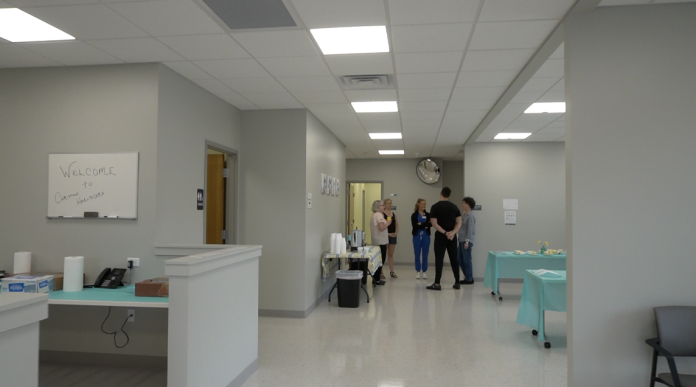Photo, May 2022, CHC Newaygo Surgical Center Grand Opening
Seven years after first opening its doors, Christian Health Care Centers (CHC), based in Grand Rapids, Michigan, will open its third direct primary care practice (DPC) in the spring of 2025, bringing its capacity to about 4,400 patients. Founder Mark Blocher talked to Health Care News managing editor AnneMarie Schieber about how his organization has made it work, the start-up costs, the decision to run as a nonprofit, and whether there is enough business to keep the doors open for a new center.
Health Care News: What prompted you to open up a new practice, one hour away from your first location and a few years after you opened a second facility, which also does direct pay surgical procedures?
Blocher: Our vision in 2017 was that we would have multiple offices in the geographic area because our goal was to be present and as accessible as we could be. We chose the third location because we had about 1,000 people traveling one hour to our first location.
Health Care News: You operate as a nonprofit, 501c3 organization. How common is that in the DPC space?
Blocher: There are two DPCs in the country that are nonprofits, and we are the largest and one of the largest DPCs overall. Most DPCs are solo or partner practices and maybe have 1,000 patients.
Going nonprofit depends on what the doctors want. If the doctor wants to get out of big-box medicine and have a modest-size patient panel and wants to maintain a salary like what they were earning, then they should do it for profit. We are nonprofit because we want to be faith-based, which gives us some legal protections and donation options that we wouldn’t have otherwise.
For example, we want to hire people who are aligned with our faith, so that gives us a bit more freedom. In fact, we are involved in a lawsuit to protect just that and feel positive we will prevail.
But overall, all the laws that apply to any medical practice that is regulated by the [Michigan] Department of Health still apply to us. We have an X-ray machine, which requires a state permit, and we had one inspection related to that since we opened.
Health Care News: As a nonprofit, how were you able to raise the funding to build a surgical center and now a new facility?
Blocher: We put together a private investor team, private equity investors, who came up with the money. CHC has a small percentage of ownership in the building. We lease from the LLC, but we have an option to buy it off at year five, which we plan to do.
We did that for our surgical center, and next year we plan to build and own a building to replace the building we lease for our original location, and the new building will include a birthing center.
Health Care News: Do you have any concerns about finding a thousand new patients to fill your new facility?
Blocher: We draw from 45 Michigan counties and 21 states, so I expect that wide reach to continue. The reason we are building in a new location was to make it easier for the people in that area to reach us without having to drive an hour. It wasn’t an overcapacity issue at our first facility.
Certainly, we must have enough exam rooms to accommodate our patient profile, but that is true for a fee-for-service practice as well. As far as staffing, we never have to recruit. Doctors, nurses, and professionals seem to always find us. When we get to 80 percent capacity, we will be planning for another facility.
Health Care News: Being a DPC, you probably don’t have to worry about being flooded with patients or running out of space, because you can do things differently and more efficiently than a fee-for-service practice. Does this help you in managing supply and demand?
Blocher: If we were a traditional fee-for-service practice where insurance companies fed us their patients, we would probably have patient panels in the 2,000 to 2,500 range, and if you see 1 percent of those patients a day, you’re not going to be able to see patients for very long. We can operate with small patient panels, maybe 600 to 700 patients for each DPC doctor, which allows us to spend more time with the patient. And the most valuable thing for the patient is the doctor’s time.
Health Care News: Do you ever worry about not meeting your bottom line?
Blocher: We are 100 percent supported by our membership fees, so we don’t have to raise money as a nonprofit to keep the lights on. We have a member financial assistance program, so we raise money for that, but that’s it. We may also raise money to buy equipment.
Our surgical center is open to everyone, not just members, and we get patients from all over the country. The word has spread quickly among Amish communities, who are drawn to our facility.
Health Care News: With you having found so much success, has any corporation or competitor for patients tried to buy you out, and have you inspired others to consider DPC?
Blocher: I have received calls from 30 different states and two foreign countries from people who want to switch to DPC. As for any competitors trying to buy us out? No. In fact, they have been very cooperative.
We’re kind of like that wasp on the windshield: potentially a threat, but on the outside.





















